Silencer Shop added me to their SOT, which means I can now borrow suppressors from their extensive inventory. In a couple of weeks I’ll be a Texan, and close enough to Silencer Shop’s HQ to also borrow professional dB metering equipment to start producing more meaningful, complete suppressor reviews for y’all. In the meantime, they loaned me a handful of “rimfire” cans to shoot back-to-back and give some initial impressions.
I own an AAC Element 2, so that was thrown into the mix along with a CGS Hydra-SS, Innovative Arms Slingshot Ti, Q El Camino, and Mack Brothers Vapor (which, left-to-right, is their order in the photo above). The El Camino was also reviewed separately here.
High-Level Overview
Shooting all five of these suppressors back-to-back while switching between pistol and rifle and subsonic and supersonic ammo hammered home one immediate point: chasing dB numbers isn’t as important as it may seem. It shouldn’t necessarily dominate a suppressor buying decision. Although the rated dB reductions for these cans vary 3 to 4-ish dB between them, there are so many factors affecting volume level that these stats are really only valid if tested in completely identical conditions (same temperature, humidity, barometric pressure, etc).
Additionally, all of these rimfire suppressors are so darn quiet with subsonic .22 LR — between 114 and 118-ish dB — that, from the shooter’s perspective, the loudest sound heard is the firearm’s moving parts anyway. Or the bullet impacting the target. Even on my bolt-action CZ 455, the striker hitting home was louder to me than the gunshot, and if I hit a solid target that was louder still. I really wouldn’t choose any one of these suppressors over the other based on volume level, as they’re all too quiet to care about the minor difference between them.
That said, my subjective impression is that the Element 2, Hydra-SS, and El Camino more or less tied for quietest. I have inklings as to how I’d rank them, but they’re so close I’m not nearly confident enough to share that guess. Next up would be the Vapor followed by the Slingshot Ti.
Now, while the Slingshot Ti was almost certainly the loudest least quiet and also had more noticeable first round pop than the others, it did seem to have a deeper tone to it (which most people find to be more pleasant vs a higher-pitched tone of the same volume level). It was louder than the others by just barely enough for me to be confident in saying it was louder, which means it’s so far under the “hearing safe” threshold and so darn quiet in general that this is a complete non-issue to me.
Prior to worrying about volume level at all, I’d choose between these five cans based on:
- build materials
- size and weight
- price
- aesthetics
- take-down process
On the build materials front, I’m effectively just anti-aluminum when it comes to baffles or tube. Sure, it’s lightweight and inexpensive and perfectly capable of holding up long-term to most rimfire calibers, but it isn’t capable of holding up to the cleaning methods I prefer. Ultrasonic tanks can eat away at aluminum unless special care is taken, and it isn’t durable enough to clean with metal tools like picks and wire brushes. Considering how much gunk gets plastered onto the innards of a .22 LR or WMR suppressor, I really want to be able to dump my baffles into an ultrasonic tank for a couple of hours then wipe them clean. Maybe picking off any stubborn deposits with a tool, as desired.
Advanced Armament Corp Element 2
When I chose this silencer in 2013 there were a handful of market leaders to look at, but nowhere near the selection that’s available today. Thankfully, it remains one of the best-performing rimfire suppressors available. That starts with quality materials — 17-4 PH stainless steel baffles and Grade 9 Titanium everything else — and an effective K-baffle configuration.
Muzzle end. The Element 2 comes with a special tool that indexes into those holes and is used to remove and re-install the end cap.
Unfortunately, baffle design “back in the day” (yes, I realize we’re only talking about 2013 here) lacked a couple nice features that have become pretty standard in the rimfire suppressor game today. Most notably, the K-baffles are open to the suppressor tube, which means the inside of the tube gets caked up in lead, carbon, wax, and other gunk. This makes removing the baffles from the tube pretty difficult, so the Element 2 comes with a special auger dealio used to press them out. It works just fine, but it’s a slower process than tipping the can upside down and the baffles simply pouring out on their own.
Since the tube also fills up with deposits, it also needs to be cleaned. Two photos up is before about 40 minutes in a small ultrasonic tank and right above is after. As you can see, Cerakote gets cleaned off in this process as well. For me it’s still a better alternative than nasty chemicals and/or lots of scraping and scrubbing, so I’ll just coat the outside of the tube yet again (I’ll probably just hit it with some high-temp engine paint from a rattle can this time).
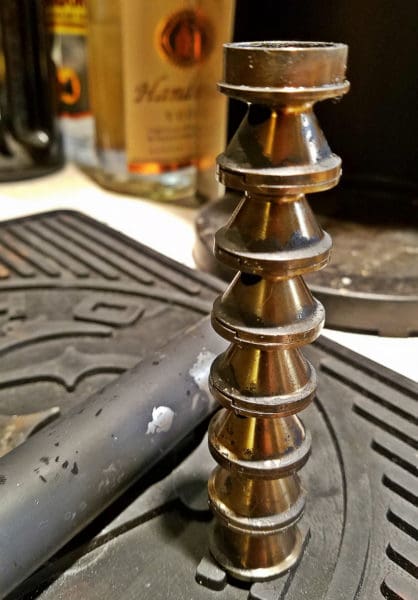
The other thing we don’t see as much these days is baffles that key into each other in a specific orientation or have to be assembled in a certain order. Thankfully only the first baffle — the blast baffle — installs in a specific order, but the rest do have to be aligned properly so notches on one fit onto lugs on the next. Each one is also supposed to be timed 90° off from its neighbor so the vent holes from baffles into tube are staggered. Stack ’em up Jenga style as in the photo above, then slide the tube down over them and install the end cap.
Considering a user-serviceable suppressor that disassembled for cleaning wasn’t even a given just a few years ago, I’ll still take it. You’ll see, though, that the rest of the silencers in this round-up are easier to clean.
I put a single, 5-shot group on paper at 50 yards with each of these cans just in case there was an outlier on the accuracy front. Considering the freezing cold weather, shoddy shooting rest, and falling snow, I honestly wouldn’t put too much stock in the results except to say that none of the suppressors ruined accuracy or provided a miraculous improvement.
Element 2 on paper:
- 5.24 inches long
- 1.0 inch in diameter
- 134 grams (4.727 ounces) weight as measured by me
- Cerakote finish
- 41 dB noise reduction rating
- 17-4 PH stainless steel baffles, Grade 9 Titanium tube and mount
- Rated for .22 LR, .22 WMR, .17 HMR. Full-auto rated.
- $479 MSRP
CGS Group Hydra-SS
Having gone black I’ll obviously never go back, but CGS Group is providing a fun new option with the flame anodized titanium tube that’s included on the Hydra-SS. They also make the Hydra-AL, which has a black anodized aluminum tube and aluminum baffles. As you’d expect, it’s both lighter and less expensive than the SS seen here with its Ti tube and 17-4 PH stainless baffles.
Business end. The Hydra ships with a special tool to unscrew and install the end cap.
Ahha, a shielded baffle stack. This design creates a tube-within-a-tube, shielding the suppressor body from that icky rimfire schmutz. Without any need to pre-assemble or time the baffles, and with only the mount and end cap being assigned to a specific location within the tube, the user can still expect the Hydra’s baffle stack to dump right out after any number of rounds.
Likely due to its long-ish length and the highest baffle count in this little round-up, the Hydra-SS is extremely quiet. For the same two reasons, it’s also the heaviest suppressor here. Of course, like volume levels, weight is a relative thing, and at 6.6 ounces it’s still far from cumbersome when installed.
With two of these suppressors turning in a 0.7-something-inch group and two a 0.8-something-inch group, the Hydra’s 1.0-something-inch group could be a bit of an outlier. Or it could have been poorly-timed snowflakes. Or me. We’ll have to revisit suppressed accuracy another time. As I do expect more along the lines of the other groups from this rifle with this ammo, though, it’s possible — possible — that it slightly hurt this rifle’s juju.
Hydra-SS on paper:
- 5.6 inches long
- 1.0 inch in diameter
- 187 grams (6.596 ounces) weight as measured by me (Hydra-AL is 3.53 ounces per manufacturer)
- Flame anodized titanium finish (or anodized aluminum on Hydra-AL)
- Noise reduction rating unknown
- 17-4 PH stainless steel baffles, Grade 9 Titanium tube (7075 aluminum baffles and 6061 aluminum tube on Hydra-AL)
- Rated for .22 LR, .22 WMR, .17 HMR, and 5.7×28. Full-auto rated. (Hydra-AL is .22 LR rated, not full-auto)
- $499.99 MSRP (Hydra-AL is $299.99 MSRP)
Innovative Arms Slingshot Ti
Hard to believe, but the 4.5-inches-short Slingshot is actually the long rimfire suppressor option from Innovative Arms. Even as the big brother to the 3.9-inch Slingshot Micro, it’s the shortest in this test. It also stands out in that it’s the only monocore design in this test. Both Slingshot lengths are available with either a stainless steel or a titanium tube, and all have a stainless steel core.
Mount end. Particularly good notches and knurling on this thing for a solid grip.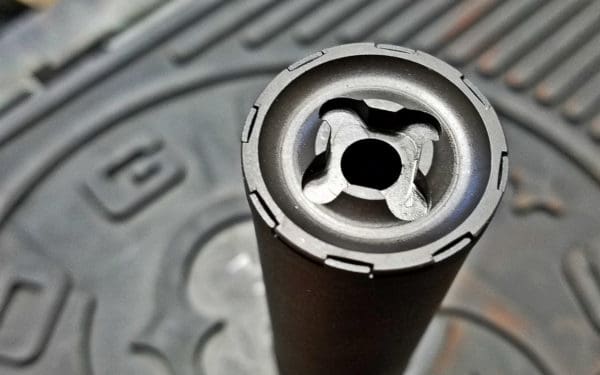
Muzzle end. No tools needed to disassemble. Some light tool marks just around the bore.
To take it apart, the aluminum retaining nut at bottom is simply unscrewed by hand and the core pushed/pulled out the front. Since it isn’t subjected to any gas, gunk, or pressure (and is nicely knurled), the ring comes off easily. Clearly, the inside of the tube is not spared exposure to those effects of rimfire combustion, but it still comes apart more easily than my Element 2. Because it’s a monocore, it can be twisted and turned once bumped forward out of the indexing teeth at the front of the tube, and doing so scrapes clean the inside of the tube quite effectively.
A stated 38 to 41 dB reduction puts it up there with the best of them, but my subjective opinion is that this can was just slightly louder than the others. At least with subsonic ammo, where general sound level differences between suppressors and especially first round pop seemed more noticeable. I definitely like the shorter, slightly fatter form factor a lot. Worth noting: my Walther PPQ 22’s standard-height sights still cleared the Slingshot Ti.
Innovative Arms speaks of “precision accuracy” on its website, and the Slingshot Ti did turn in the tightest group of the test. Heck, four of five holes are touching.
Slingshot Ti on paper:
- 4.5 inches long
- 1.125 inches in diameter
- 148 grams (5.221 ounces) weight as measured by me
- Natural titanium or Black, OD Green, or FDE Cerakote
- 38-41 dB noise reduction rating
- Stainless steel core, Titanium tube
- Rated for .22 LR, .22 WMR, .17 HMR, .17 Mach II, and 5.7×28. Full-auto rated.
- $489 MSRP ($399 with stainless steel tube)
Mack Brothers Vapor
The Vapor is the only can here with titanium baffles as well as a titanium tube, lending it a light weight for its length.
The uniquely triangular-ish mount provides easy and secure purchase.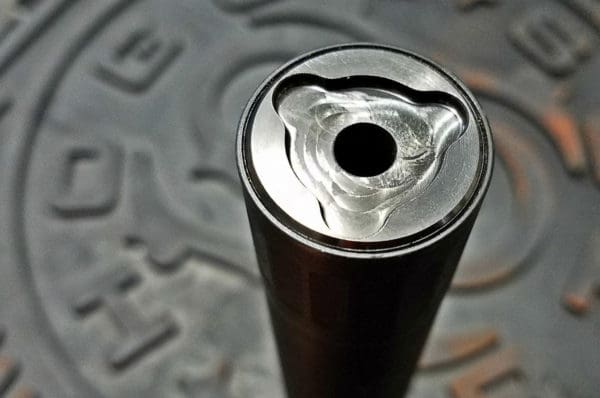
An included, proprietary tool indexes into the end cap for removal and installation. Alternatively, the mount also works as a disassembly tool, which is pretty slick. I could go for a little sandblasting or polishing to remove those tool marks on the muzzle end, though.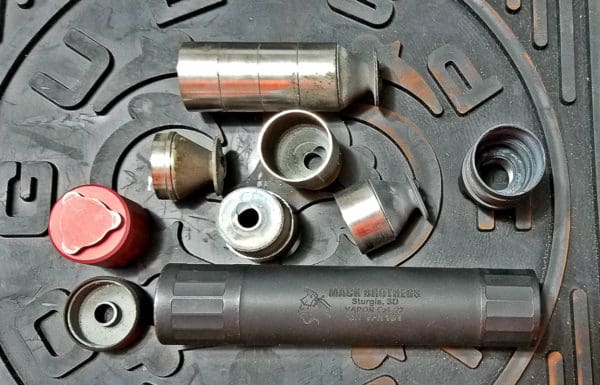
Breaking down the Vapor reveals a unique baffle design that’s like a K-baffle/shrouded baffle hybrid — basically, a skirt has been added to a K-baffle. It does function well to keep the inside of the tube clean, but I think it’s cutting down on expansion volume and adding weight compared to a standard K-baffle design or, for instance, the El Camino’s baffle design.
I like the somewhat industrial look of the Vapor and the retail price on Silencer Shop ($335) is compelling, but it otherwise isn’t particularly appealing to me up against the stiff competition here.
Mack Brothers Vapor on paper:
- 5.375 inches long
- 1.0 inch in diameter
- 123 grams (4.339 ounces) weight as measured by me
- Cerakote
- Noise reduction rating unknown
- Titanium baffles and tube
- Rated for .22 LR, .22 WMR, .17 HMR, and 5.7×28. Full-auto rated.
- $535 MSRP
Q El Camino
The newest suppressor in this round-up is from Kevin Brittingham’s new venture, Q LLC, and just hit the market about a month ago. It’s reviewed separately here, so check that out for a lot more photos and details. While it’s the longest firearms muffler in this test, it’s still one of the lightest.
Dangerous end. While the gear shape in the middle looks neat and, at first glance, looks like it would require a proprietary tool, it actually doesn’t. Any standard 1/2-inch socket or box wrench fits snugly on the flat sides and can be used to remove and replace the end cap. There are some light machine marks visible here.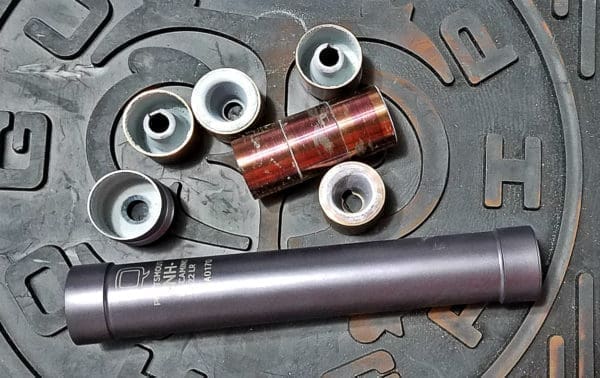
17-4 PH stainless baffles are shrouded for that tube-in-a-tube effect. No special order or orientation is needed — just plunk ’em in with the small bore opening side (W side, not V side) pointing towards the mount end.
Can’t say I’m a huge fan of the slightly purplish color — although I certainly do prefer a PVD treatment to Cerakote — but I otherwise dig the El Camino a whole lot. It’s one of the very quietest rimfire cans on the market, it disassembles and cleans as easily as it gets, and it’s the second lightest in this test at just a fraction of a gram heavier than the Vapor.
Q El Camino on paper:
- 5.9 inches long
- 0.99 inches in diameter
- 123.9 grams (4.37 ounces) weight as measured by me
- PVD
- 114 dB claimed sound volume
- Stainless steel baffles, titanium tube
- Rated for .22 LR, .22 WMR, .17 HMR, and 5.7×28. Full-auto rated.
- $399 MSRP (available exclusively at Silencer Shop, apparently for the first year)
Conclusions
Overall, there’s a lot more to consider when shopping for a rimfire can than dB ratings. For me it’s construction first, followed by some sort of mashup of size, weight, and aesthetics.
Stay tuned for more suppressor reviews in the future as I raid Silencer Shop’s inventory (and Tyler raids Capitol Armory’s). Most likely we’ll revisit some or all of the units in this round-up to add dB testing information and do more extensive accuracy testing.

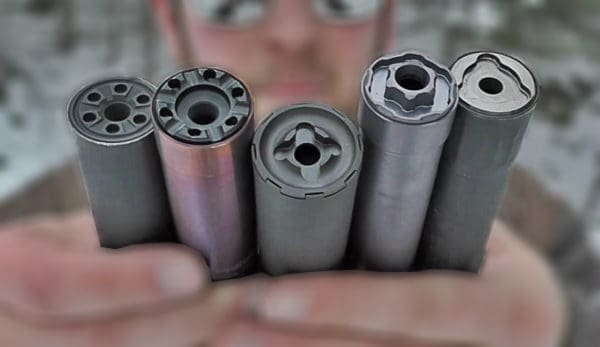
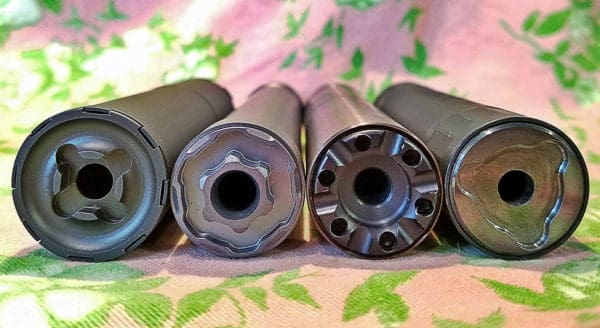
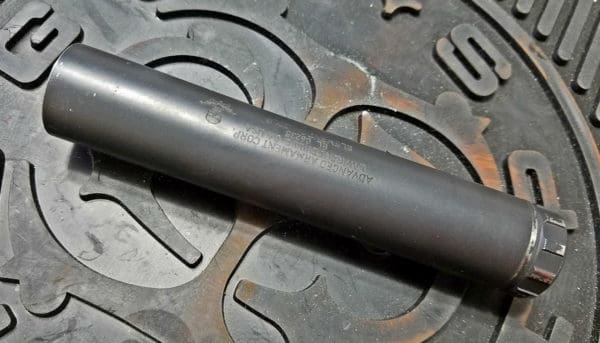
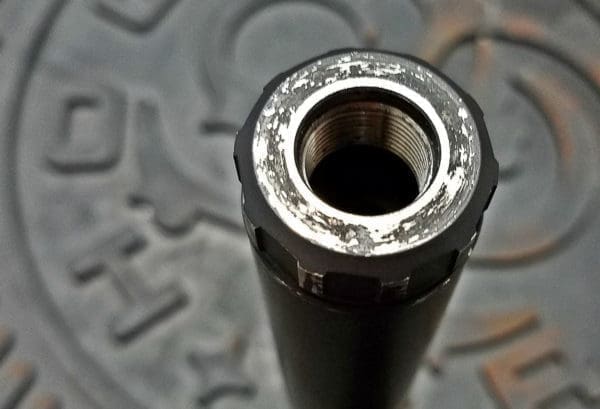
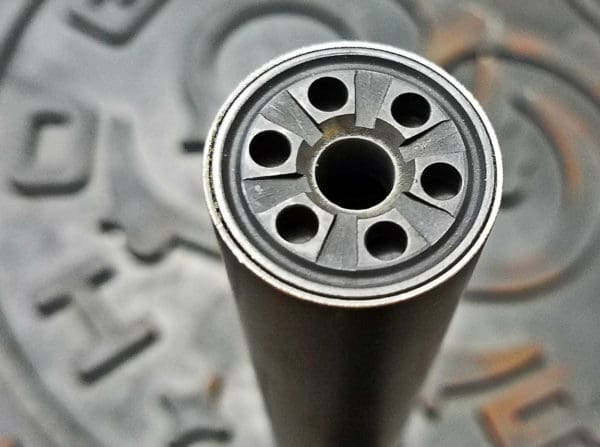
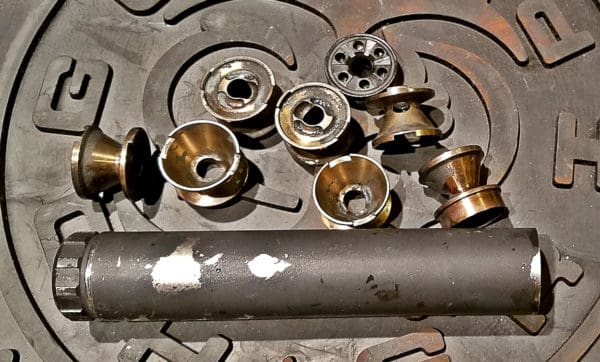
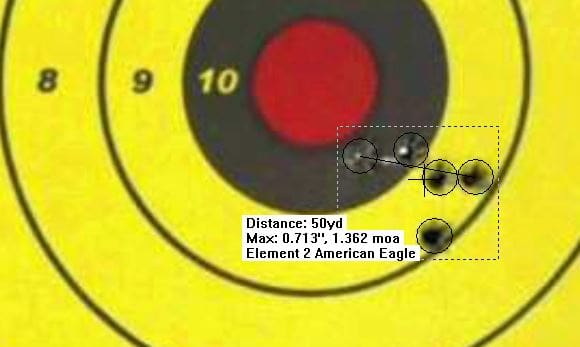
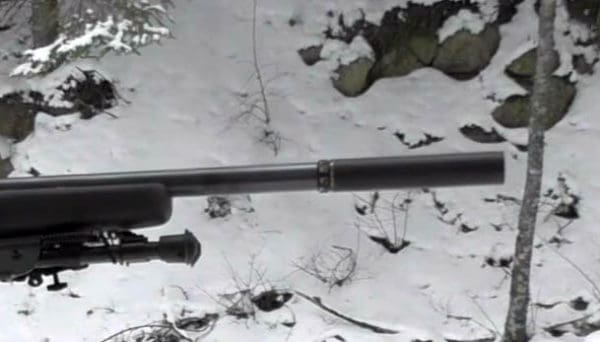
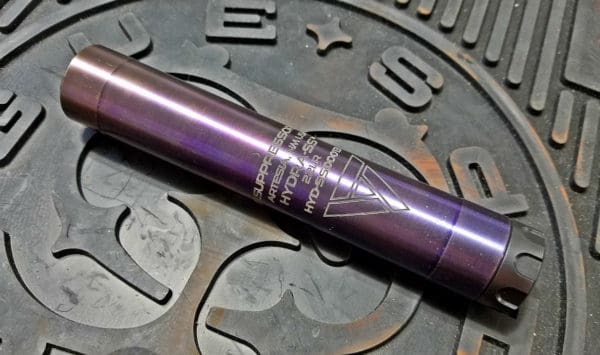
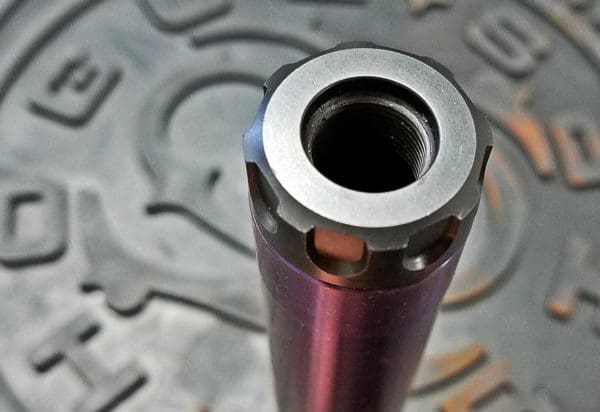
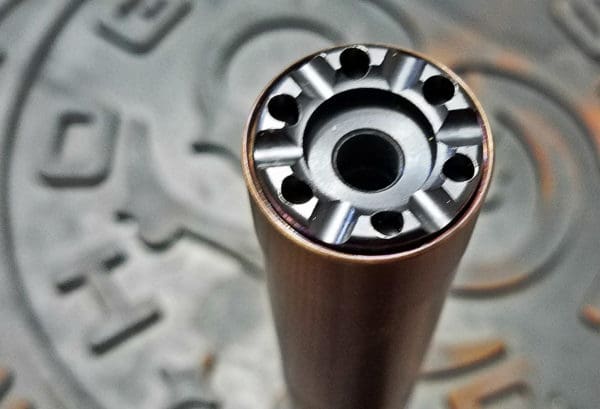

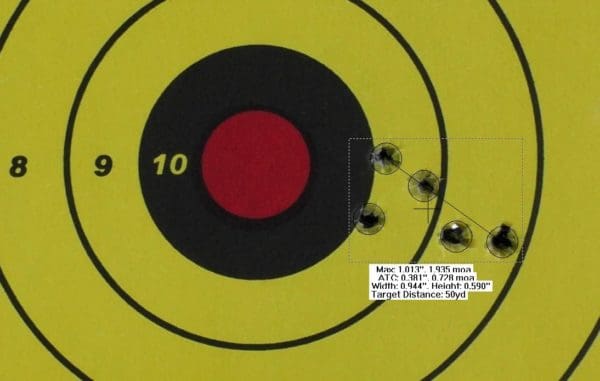




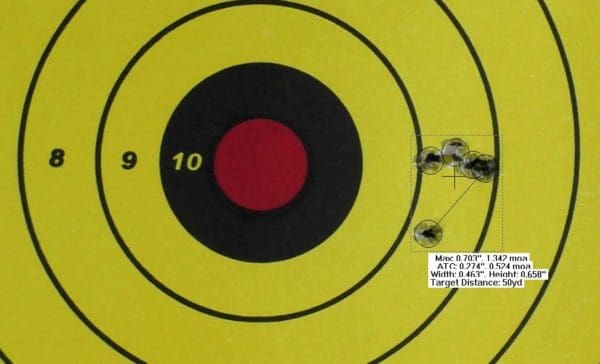
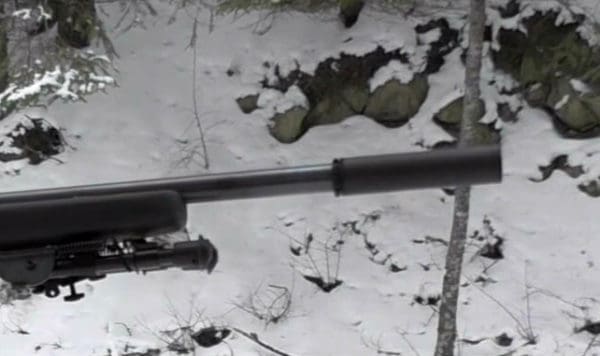
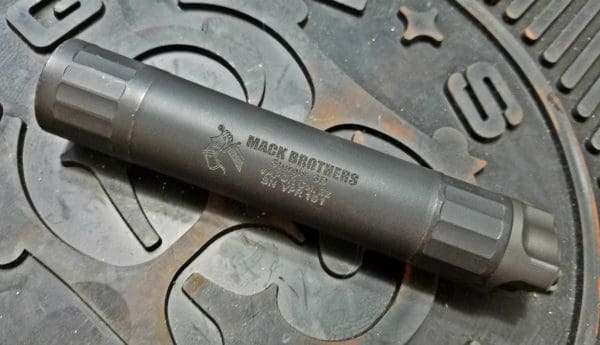
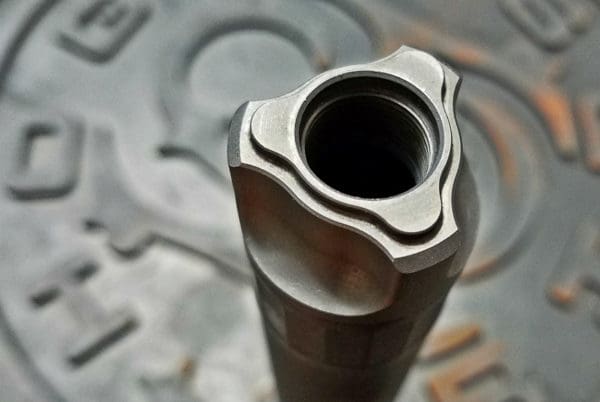

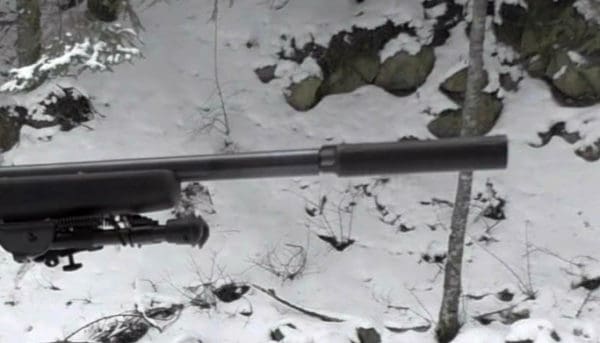
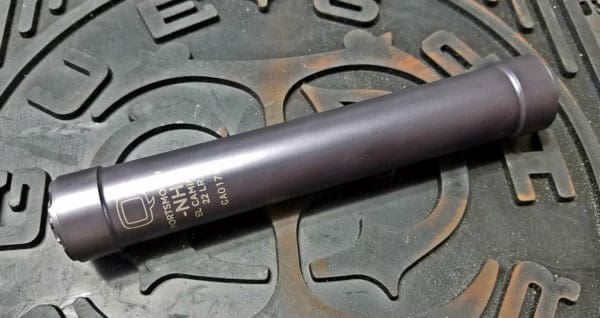
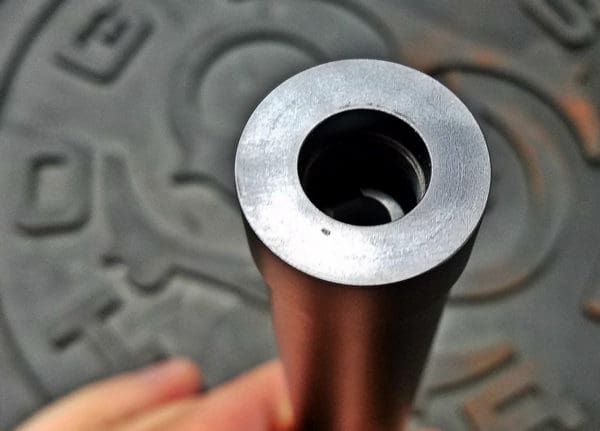

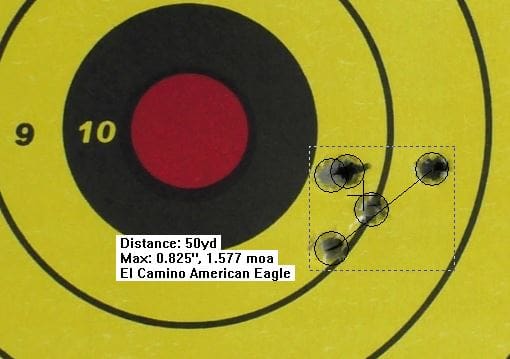
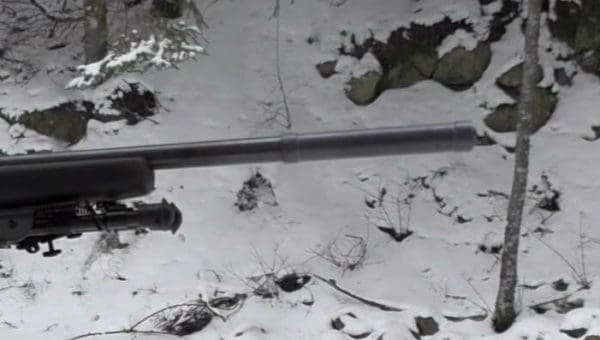
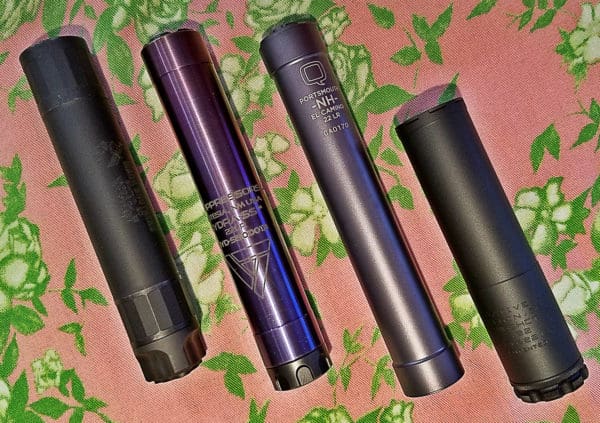



Nice write up.
FWIW I’ve been extremely pleased with my Dead Air Mask .22. I’m hopeful that TTAG will include other major-brand cans in future reviews, not just what can be easily and freely borrowed from one single online shop.
Otherwise, a great review.
Borrowing NFA items has many large complications. Thankfully Silencer Shop carries the most brands and models of anyone. Then with Tyler working through Capital Armory we have even more brands covered. Including Dead Air (I own a Sandman Ti BTW).
Until such time that TTAG gets its own SOT (possible) or the HPA gets passed (and/or the NFA gets repealed), I’m afraid there will be limits and difficulties associated with borrowing silencers.
BUT, as mentioned in the lead, you can expect much more on quantity AND quality beginning in a month or two. We’ll revisit a lot of this stuff with the addition of dB data and more.
“Until such time that TTAG gets its own SOT (possible)…”
That can have some serious perils of its own.
As TTAG is run at least partially from private homes, it puts a big target on them for theft or worse. Perhaps TTAG could make an arrangement with, say, the range at Austin. They may not be interested in the potential liability of them being targeted for theft, however…
Range at Austin is already an FFL07/SOT, I do believe (and Nick is or was on it). It’ll likely make more sense, if something along these lines were to happen, to legally join another SOT as an employee/employees so we can temporarily borrow things that are temporarily transferred from manufacturers to the SOT. The only thing having our own would really add would be an increased ability to manufacture fun configurations ourselves for the primary purpose of more entertaining videos, but it’s probably a pipe dream. Frankly, I think with a few of us being on the SOTs of a few major retailers we’ll have a lot of ground covered for creating many great reviews.
No Ruger can, or even the Silencerco Sparrow? The Sparrow I thought would’ve for sure made a test list.
These all came from Silencershop. They don’t sell Silencerco.
Coming to Texas eh?
Welcome
I was hoping for the Liberty Regulator, although I have already taken a non-possessory, 100% economic ownership interest in one.
I hate waiting.
I wish they would have included the OSS HTX suppressors in the list. I would really like to see how that stacks up.
Excuse my comment, I didn’t read the entire article and didn’t realize this was for rimfire only.
Fantastic! Looking forward to more suppressor reviews…
Sooo many cans…so little column space.
Thanks for the down-low on these five. Looking forward to more reviews and tests.
Hear’s hoping the HPA passes soon.
Good read. I’d love to see if the Rugged Oculus is as good as I think it might be. Planning on it being my first can purchase.
It’s pretty awesome looking! Definitely one I want to borrow soon.
please do at ear db measurements on all cans tested when you do them.
If you are getting access to professional sound testing equipment, could you test some muzzle devices as well? Something like at shooter’s ear and perpendicular to muzzle 2 meters away? One thing I am very curious about are linear comps/flash cans. They are supposed to throw sound down range. I am not about to go down range while someone shoots my AR, but I slapped a KAW linear comp on my 20″ .223 wylde AR-15 and it certainly seems to be noticeably quieter shooting it and standing at the shooters shoulder when my buddy shot it. Absolutely not quiet, but muzzle blast and volume seemed a little better compared to the A2 that had been on there.
I’d be really interested to see actual test data to support or refute the impact of flash cans and linear comps on noise and muzzle blast. Especially as popular as they are getting on AR pistols and SBRs. A little 8-10″ testing and some 16″ testing with 5.56 and .300 blackout.
You know, if you are taking requests 🙂
This is already planned. It will include a ton of muzzle devices and have dB readings in addition to data from: http://www.thetruthaboutguns.com/2016/11/jeremy-s/blast-gauge-system-blackbox-biometrics/
Likely to happen in March…
“Silencer Shop added me to their SOT, which means I can now borrow suppressors from their extensive inventory.”
“Until such time that TTAG gets its own SOT.”
“to legally join another SOT as an employee/employees so we can temporarily borrow things that are temporarily transferred from manufacturers to the SOT”(possible)”
These comments indicate you do not really understand the NFA process. You do not get added to an SOT. Any dealer can add an SOT to their existing FFL by sending in a check. You do not join an SOT as an employee, And you do not get to “borrow things.”
Please spend 1 hr talking to someone at Silencer Shop who understands NFA and let them correct you on terminology and procedures, before someone at ATF talks to you.
Welcome to Texas.